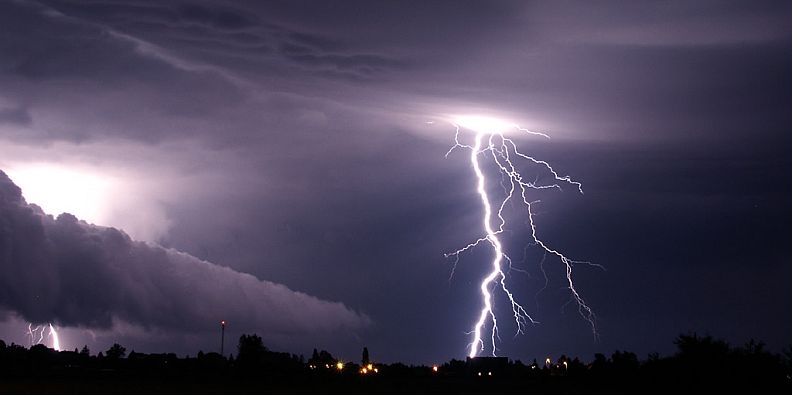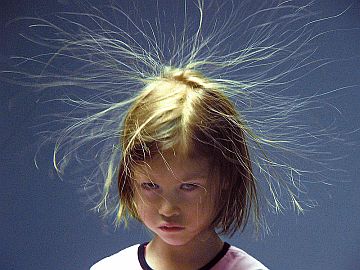Lightning

Lightning is static electricity caused from the friction of particles of dust, ice and water droplets colliding with each other. This causes a collection of negative charges in the cloud which begins to send down a stream of ionized air, known as a charged leader.
As the cloud moves over the land, an equal but opposite electrical charge is formed in the earth. As the charges in the cloud approach closer to the earth, the attraction gets very strong and a similar positive charge of ionized air emanates from the earth — this is called a streamer.
So obviously mountain tops get a lot more strikes than lowlands, since they are the first to come in contact with the descending cloud charges.
When a charged leader and the streamer finally connect, there is a huge discharge of electricity that actually travels from the ground back up to the cloud at 140,000 mph and around 54,000° F. This is the bright flashing streak that we see.
There are several ways someone can be struck in an electrical storm — direct strike, jumping (or arcing) from another object to you, or from running through the ground just where you happen to be standing. Even the shock wave from the explosion of rapidly heated air surrounding a nearby lightning strike can cause blunt trauma; in other words, being struck by thunder!
In any case, lightning strikes can be deadly. After someone is struck, there is no danger of a rescuer being shocked by touching them. Your most immediate concern will be, Is the victim in cardiopulmonary arrest? In the Greek this means they have stopped breathing and have no pulse. If so, CPR must be initiated immediately. It is also of utmost importance that the victim get to a hospital.
The first thing you should do to help prevent injury in an electrical storm is to check weather forecasts before your trip. However, weather forecasts for the mountains are often not very accurate, due to the effects of air flow around and over them, and an orographically generated storm can form even when surrounding areas are clear.
I've been camped on a high ridge before when a thunderstorm struck in the middle of the night, and trust me, it ain't no fun! So take heed to where you camp, as tents provide no protection from lightning.
So, what I am saying is that bad weather in the mountains is not completely avoidable. If you are caught in a thunderstorm, HERE'S WHAT YOU CAN DO:
— if you are caught out in the open, seek shelter away from lone trees and rocks, and get off the top of the mountain or ridge;
— never stand in a clearing or you will just become a lightning rod;
— do not touch any metal objects, also take off any metal items you are carrying or wearing, such as an ice axe or crampons;
— always get away from water;
— get to lower ground;
— insulate yourself from the ground by sitting on your pack or sleeping pad, and crouch down as low as you can, but do not lie down;
— if you can get into a thick grove of small trees or bushes, then do so and crouch down low;

— and if your hair stands on end, get your rear off that ridge or mountain top immediately, even if the storm doesn’t seem that close, as lightning can travel up to 20 miles away from the storm!
Back to Mountain Safety from Lightning page



